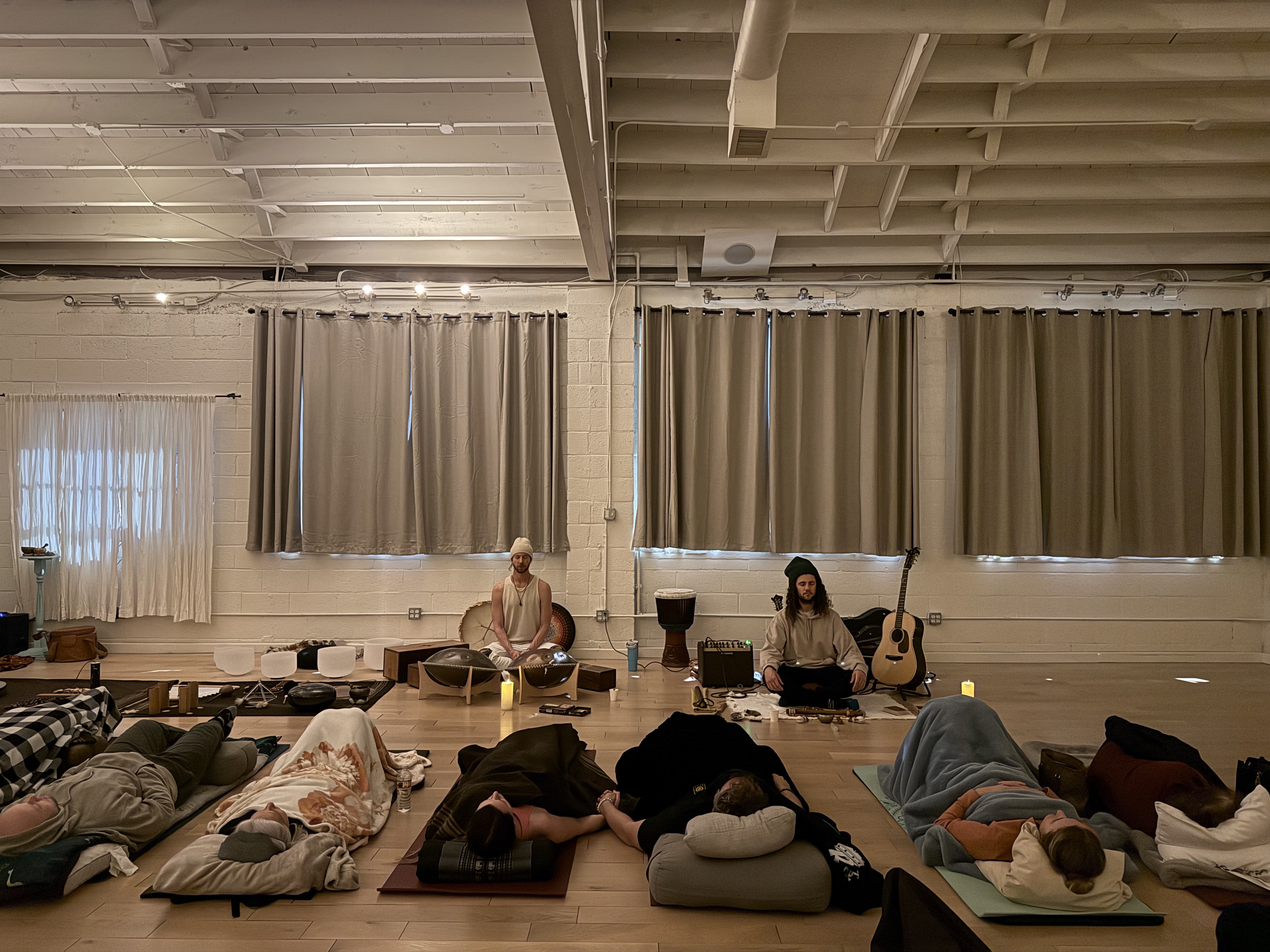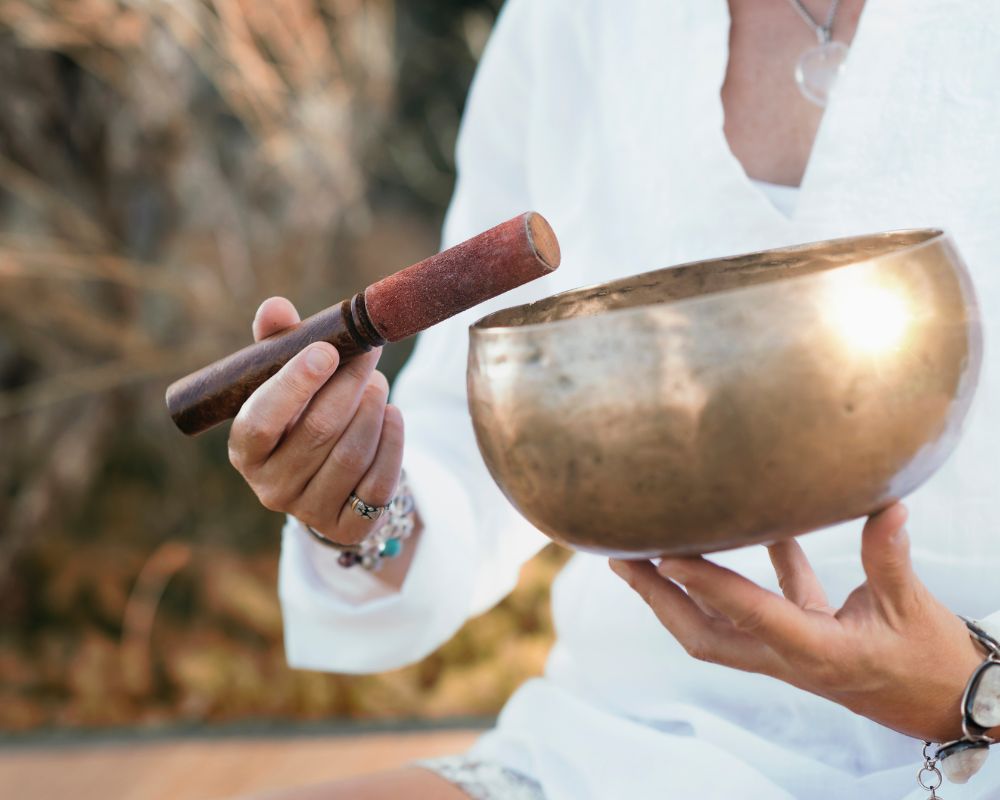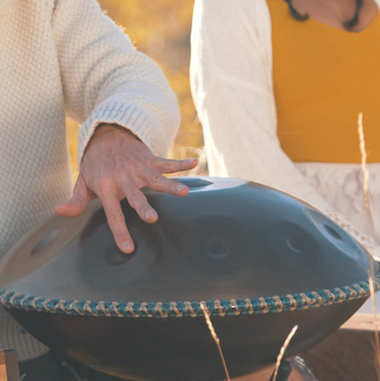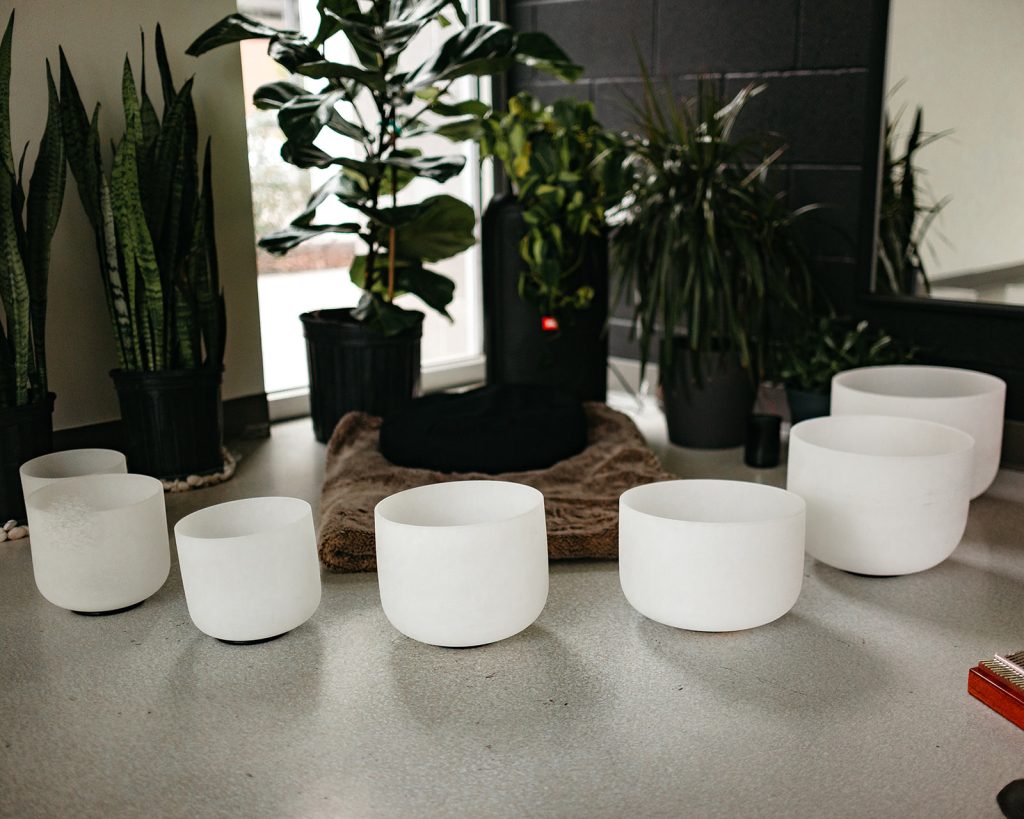SOUND BATHS
A sound bath is a meditative experience where you’re enveloped by calming, resonant sounds that promote deep relaxation and wellbeing – like a water bath, but it’s a sound experience.
Whether you’re exploring sound baths or ready to dive in, at Maloca Sound & Wellness, we want you to feel prepared.

What's a sound bath?
A sound bath is a therapeutic experience where a person is immersed in resonant sound. This resonant sound is where sound waves interact with the environment where they’re produced, creating optimal resonance between instruments, practitioner, and participant.
When optimal resonance is achieved, sound waves and vibrations are in perfect harmony. This is what encourages relaxation and spiritual healing.

Why Sound Baths?
Reduced stress & anxiety
Improved mood
Increased self awareness
Spiritual growth & healing
Pain relief
Improved sleep
Stress and anxiety reduction is the most visible benefit of sound baths.
Whether in private sessions or as part of healing retreats, sound baths help participants relax and reconnect with themselves. As sound bath practitioners, we regularly witness people enter sessions feeling overwhelmed, distracted, or overstimulated from the outside world and leave more relaxed than ever.
Sound baths also play a key role in spiritual growth and healing. The resonant sound created by a sound bath encourages stillness and creativity, allowing participants to release mental noise and access deeper insight and healing.
Sound Bath Instruments
Our instruments are carefully chosen for the types of sounds they produce and their ability to help us achieve optimal resonance.
We use a variety of instruments in our sound baths and breathwork sessions, including crystal singing bowls, gongs, handpans, wooden tongue drums, tuning forks, and skin drums, and more. Using a combination of familiar and unique sounds, my goal is to orchestrate harmony to create an effective, healing sound bath.







About Us
Sound Meditation, Music Therapy, & Shamanic Drumming
Maloca Sound & Wellness is a trauma-informed healing practice rooted in the belief that true transformation happens through the body.
Founded by Justin Crawmer, a lifelong musician and trained Owaken Breathwork facilitator, Maloca blends sound healing, breathwork, and somatic practices to support nervous system regulation, emotional release, and spiritual connection.
Guided by the principles of vibrational medicine, indigenous wisdom, and modern science, Maloca Sound & Wellness offers immersive experiences—ranging from private sessions to group events and retreats—that help individuals reconnect with themselves, their community, and the land.
Schedule a Private Session
Current availability (MST):
- Tuesdays: 10am–12pm & 4–7pm
- Wednesdays: 4–7pm
- Thursdays: 10am–12pm
Occasional one-off time slots available upon request. Please contact us here.
Cancellation policy: Please let us know 24 hours before your scheduled session if you need to cancel, otherwise you will be charged for the session price. Refunds may take up to 2 weeks to process.
See Our Public and Group Sessions
Frequently Asked Questions
Do I need experience to attend a sound bath?
No experience is necessary. Sound baths are accessible to everyone, whether it’s your first time or part of an ongoing healing journey. Just come as you are and allow the sound to support you
What should I bring to a sound bath session?
We recommend bringing a yoga mat or blanket to lie on, a pillow or eye mask if desired, and water. Dress comfortably—you’ll be lying down and relaxing for most of the session.
How long is a typical sound bath?
Most private sound baths are 90 minutes. Group sound bath events may range from 60 to 90 minutes, depending on the setting and facilitator collaboration
What’s the difference between a private sound bath and a group sound bath?
A private sound bath is a 1:1 or small group experience personalized to your energy, intention, and goals. A group sound bath brings together multiple participants in a shared space for collective relaxation and healing. Both offer the benefits of sound therapy, but private sessions are more tailored and often include energetic dialogue.
Who leads your sessions—and what is a sound bath facilitator or sound practitioner?
Sessions are led by Justin, a sound bath facilitator, sound practitioner, and seasoned drummer with 35+ years of experience. He blends ancient healing practices with modern techniques using instruments, vibrational medicine, and voice to support deep transformation.
Do you offer sound healing retreats or somatic therapy retreats?
Yes! We host immersive retreats—like Higher Vibrations—that integrate sound healing, somatic therapy, breathwork, movement, and nature. These sound healing retreats are designed for full-body healing, connection, and spiritual renewal in beautiful, off-grid locations.
How is sound therapy different from reiki healing or vibrational medicine?
Sound therapy uses acoustic instruments and vocal tones to shift brainwave states and body vibration. Reiki healing is a form of energy healing that channels life force through light touch or hovering hands. Vibrational medicine encompasses both, working with frequencies to restore balance across physical, emotional, and energetic layers.
What instruments are used in sound baths and shamanic drumming sessions?
We use a variety of instruments in our sound baths and shamanic drumming sessions, including crystal singing bowls, gongs, handpans, wooden tongue drums, tuning forks, and skin drums. Each is chosen for its unique frequency and healing effect on the body and mind.
Singing Bowls – A singing bowl is a metal bowl capable of emitting a deep resonant sound that one can actually feel. Sound is produced by rubbing the bowl’s rim with a wooden striker. Sound waves can be modified by adding water to the bowl.
Gongs – A gong is a large metal disc not unlike the large symbols you see in a marching band. However, gongs are not ‘played’ by striking two of them together. Rather, sound is produced by striking the gong with a mallet. Different frequencies are achieved through gongs of varying sizes. The type of mallet a practitioner chooses also affects a gong’s resonant sound.
Handpans – Handpans are steel, UFO-shaped drums that produce soft, melodic tones when tapped with the hands. Each note is tuned to a specific frequency, creating rich harmonics and a calming, ethereal soundscape ideal for meditation and emotional release.
Tongue Drums – Crafted from hardwood and/or metal, tongue drums feature carved “tongues” that produce soothing, bell-like tones when struck. Their warm, earthy resonance makes them excellent for grounding and deepening introspective states during a sound bath.
Tuning Forks – Guitar players and other types of musicians are familiar with tuning forks as tools for tuning their instruments. A tuning fork produces a pure sound when struck. And because tuning forks can be manufactured at a variety of frequencies, sound practitioners can strategically choose them to target different parts of the body.
Wind Chimes – Bamboo, wooden, or metal wind chimes suspended loosely on frames produce a lovely and relaxing sound as the wind blows by. If you have ever had a wind chime on your own porch, you know how calming listening to it can be.
Drums – A variety of drums are used in sound yoga and sound baths. The ocean drum is a favorite. But rather than beating it, the ocean drum is shaken to take advantage of beads found within. The beads create a sound reminiscent of waves crashing on the shore. It’s a deeply relaxing sound.
Can I book a reiki master for a personalized healing session at Maloca Sound?
Yes. Reiki is offered as a stand-alone session or as an add-on to private sound healing. Sessions are guided by a trained reiki master, using gentle, hands-on or hands-off techniques to restore energetic flow and bring balance to the body and spirit.
What role does a cacao ceremony play in your sound healing sessions?
A cacao ceremony is a heart-opening ritual that uses ceremonial-grade cacao to deepen presence, connection, and intention. At our sound healing retreats, cacao often serves as a grounding, communal opening before sound journeys, meditation, or shamanic drumming sessions.
Is sound yoga similar? And what instruments does it use?
Sound baths can be utilized on their own or combined with the principles of yoga. When the two are combined, you have the previously mentioned practice of Nada Yoga. Also known as sound yoga, Nada Yoga is often described as the ‘science of sound healing’.
Instrument choices are key to this particular type of yoga. By combining established yoga practices and the right instruments, practitioners can help participants experience deep relaxation and spiritual connection. And like sound baths alone, sound yoga can help increase self-awareness, improve mood, and relieve pain.
Schedule your session:
SESSIONS WILL BE HELD IN-PERSON IN SALT LAKE CITY, UT AT A CONVENIENT LOCATION OF YOUR CHOICE, OR VIRTUALLY OVER ZOOM.
Package one
1 session
90 minutes
$222
Package Two
5 sessions
90 minutes each
$999
Package Three
10 sessions
90 minutes each
$1750
Where do Sound Baths come from?
The History of Sound Baths
The sound bath is not a new concept. Historical records trace the belief in healing sound back to ancient cultures in India, Egypt, and Greece. Beginning with ancient India, a sound healing practice known as Nada Yoga was developed among practitioners looking to enhance yoga for deeper relaxation and improved meditation. Nada Yoga is still practiced today.
Ancient Egyptians were less likely to use instruments like gongs, tuning forks, and singing bowls, but they still knew of the healing power of resonant sound. History records ample evidence of Egyptian practices in which music and chanting was incorporated with temple ceremonies to achieve a heightened sense of spirituality.
In ancient Greece, it was a common belief that sound was an effective tool for both physical and mental healing. Verbal chanting and instrument-derived sounds were utilized as treatments for a variety of medical conditions, including pain, depression, and anxiety.
The Modern Sound Bath
The modern sound bath does not fully replicate its ancient origins. What we know as the sound bath today was born somewhere back in the late 1960s or early 70s. It’s hard to put an exact date on it because so many people were trying ‘new ways’ of spiritual healing back then.
The sound bath practitioners of the era were mainly musicians who learned about the healing power of sound while practicing their craft. Many musicians became sound healers who experimented with a variety of instruments to create the resonant sounds we’re so familiar with today. And a lot of what we do today can be traced back to one of the pioneers of sound bath healing, Don Conreaux.
Conreaux began his journey into sound healing as a teenager in the 1950s, when he studied under Paramahansa Yogananda. In his early adult years, he developed a few well-known practices, including Gong Yoga and the Gong Bath. He began hosting his own sound baths in the mid-1970s, mainly in California.
Time and Greater Understanding
Modern sound bath practices still draw from the foundational principles introduced by early pioneers like Don Conreaux. Over time, sound healing practitioners have expanded on these roots with deeper understanding and new techniques.
Today, sound baths are embraced by people across generations—especially those seeking holistic healing. With a long history in natural health traditions, sound baths continue to support mental, physical, and spiritual well-being around the world.
Sound baths have a long and well-documented history. They have been used around the world as a natural means of encouraging good mental, spiritual, and physical health.